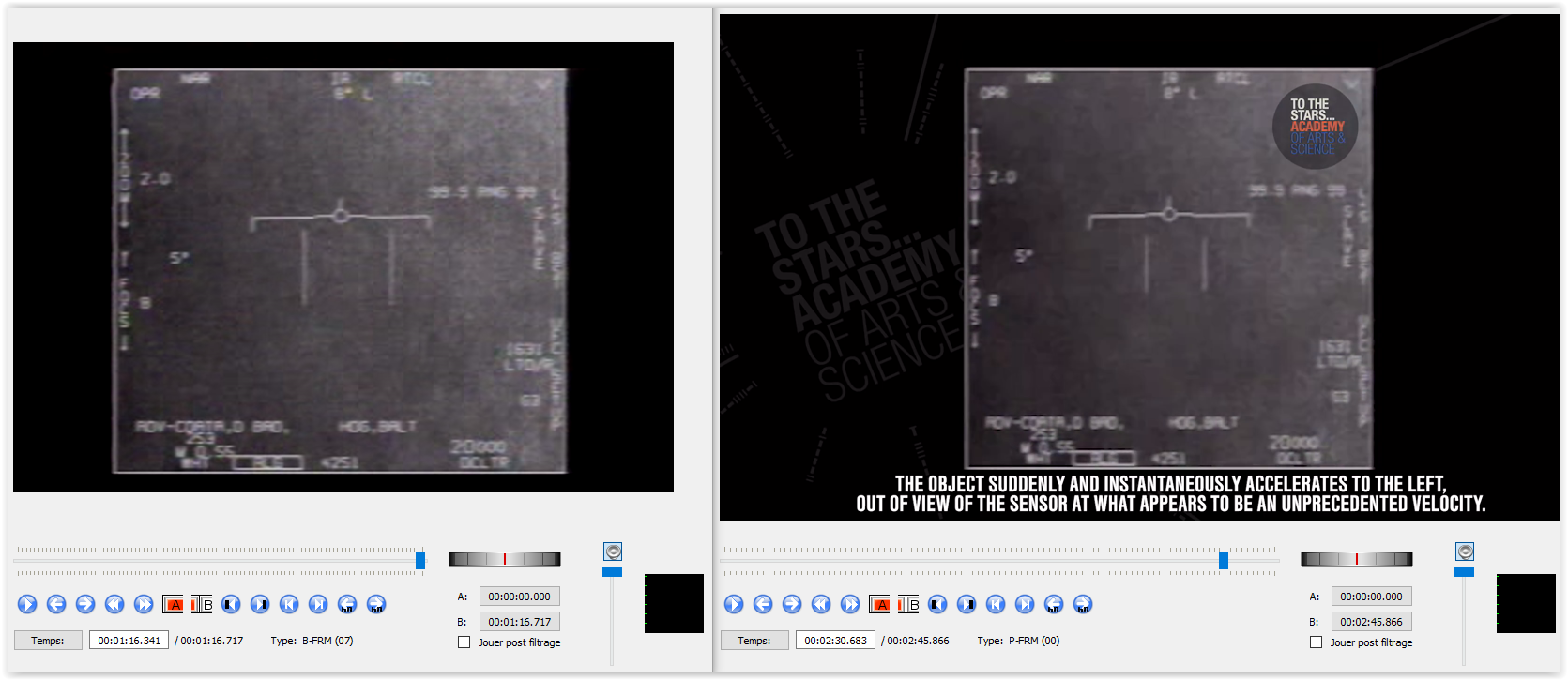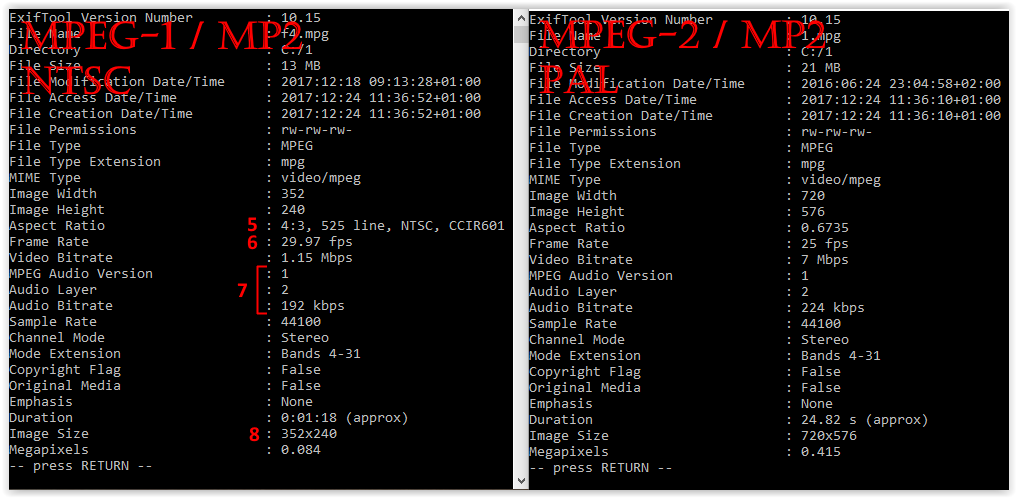We can learn the following from a closer look at the f4.mpg file, directly downloaded from the Wayback Internet Archives:
1- In comparison with the TTS video, it lasts longer, 1’16.717 vs 1’16.209.
2- There are two missing frames in the beginning of the f4 video.
3- There are three missing frames at the end of the TTS video.

4- The overall quality is better (less compression) in the f4 file.
Also, a close inspection of the metadata (with EXIFTool) is interesting:

Compared to an original unedited mpeg-2 video (to the right), all the metadata tags are presents and correctly filled in. These are typical of the MPEG-1 or MPEG-2 standard, with the difference that MPEG-1 has lower resolution and a bitrate less than 1.5Mbit/s.
5- This line shows, besides the classic 4:3 format, that it is compliant with the NTSC standard for Americas (including USA). The mention “525 line” refers to the NTSC color encoding used for the
television signal which consist of 30000/1001 interlaced (2x262.5 scanned lines) frames of video per second.
The CCIR601 mention refers to the standards as defined by the CCIR (International Telecommunication Union and Radiocommunication Sector) for encoding interlaced analog video signals in digital video signals.
Also, this is typically what we can see for a Source Input Format (“SIF”) as defined for the MPEG-1 standard. SIF is a format used for color space and subsampling, image resolution and frame rate of digital videos.
SIF is used in Low Definition TV (“LDTV”), VCD, or Mobile Television (HTV).
6- Frame rate: 30000/1001 frames per second.
7-
There’s an audio track, conform to mpeg specifications, with Layer II (“MP2”) and a corresponding 192kbps bitrate. What is odd here is that the MPEG-1 Audio track, as we can hear it, looks different in the f4 file and in the TTS file, although it can be perceived as a background noise, in both cases.
I wonder if, when TTS says “it is important to note that the video was delivered without audio”, they checked at first (if there’s any in the TTS “original” file) the metadata. “Without audio” might simply mean for TTS “without any noticeable sound.
8- Image size (video resolution) is compliant with the SIF 525 line (NTSC) based-system format.
What can be concluded from all of this?
- The f4 and the TTS video were cut differently.
- The f4 video was cut by a software that does not let any traces on the metadata, or possibly created by an in-built system. I was thinking of the ROVER system, but looks like F/A-18 Hornets were modified with ROVER capabilities only in 2006, for the first deployment of the USS Ronald Reagan. Could another early similar system have been used?
Anyway, it have to deal with the way the video was captured and rendered either by an in-built system or later during the tech debrief. There's probably more to dig here as I would be curious to know how the video is recorded (was it really done, back in 2004, with the MPEG-1 standards?)
- Unless someone talented manipulated the video, I do not see any tampering evidence for the f4 file. I tend to think that it is a “real” untouched video, thus not a hoax. Not 100% impossible, but… there's no evidence of that.
- If all the metadata are original, then the file is compliant with the NTSC standard, meaning that it was likely created in a NTSC area (USA, Canada…) and not in an European area (in Germany for example).
- F4 video is compliant with a
classic NTSC television system, in a low-resolution and bitrate SIF format.
- There’s an audio track, but what can be heard just looks like a background noise, not similar in both video though. Here also, I guess that there's more to learn.



